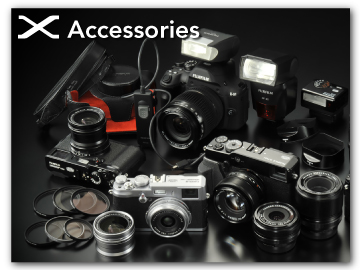Choosing a Shooting Mode
Modes P, S, A, and M can be selected via adjustments to shutter speed and/or aperture. In auto mode (AUTO), you can let the camera automatically recognize the scene and the subject to adjust settings, or you can choose the scene yourself.
- Y (AUTO)
- Mode P: Program AE
- Mode S: Shutter-Priority AE
- Mode A: Aperture-Priority AE
- Mode M: Manual Exposure
Y (AUTO)
The camera automatically detects the subject and adjusts focus and chooses a scene mode appropriately.
Rotate the auto mode selector lever to AUTO to view the shooting display for Y mode.


The camera automatically displays icons showing the selected scene and the type of subject selected for focus.
Subject

Scene
| Icon | Description |
|---|---|
| Scene |
|
| Subject |
|
The mode selected may vary with shooting conditions. The camera may also choose different modes for the same scene depending on shooting conditions. If the mode chosen by the camera does not match the actual scene, you can choose a different mode.
The additional processing time required in some scene modes may increase save times.
No icon will be displayed if the camera is unable to determine the type of scene.
Choosing a Scene Mode
After rotating the auto mode selector lever to AUTO, you can rotate the front command dial to choose from the scene modes listed below, optimizing camera settings for the selected subject type.
| Scene | Description |
|---|---|
| YAUTO | The camera automatically optimizes settings to suit the scene and subject. |
| hPORTRAIT | Choose for portraits. |
| ZPORTRAIT ENHANCER | Processes portraits to give the subject a smooth, natural-looking complexion. |
| MLANDSCAPE | Choose for daylight shots of buildings and landscapes. |
| NSPORT | Choose when photographing moving subjects. |
| ONIGHT | Choose for poorly lit twilight or night scenes. |
| HNIGHT (TRIPOD) | Choose this mode for slow shutter speeds when shooting at night. |
| pFIREWORKS | Slow shutter speeds are used to capture the expanding burst of light from a firework. |
| QSUNSET | Choose this mode to record the vivid colors in sunrises and sunsets. |
| RSNOW | Choose for crisp, clear shots that capture the brightness of scenes dominated by shining white snow. |
| sBEACH | Choose for crisp, clear shots that capture the brightness of sunlit beaches. |
| fUNDERWATER | Reduces the blue cast typically associated with underwater lighting. |
| UPARTY | Capture indoor background lighting under low-light conditions. |
| VFLOWER | Effective for taking more vivid shots of flowers. |
| WTEXT | Take clear pictures of text or drawings in print. |
You can also choose the scene mode via ASHOOTING SETTING > AUTO MODE SETTING.
When pFIREWORKS is chosen, use the rear command dial to change the shutter speed when the shutter speed dial is rotated to 2, 1, or T.
Mode P: Program AE
Let the camera choose shutter speed and aperture for optimal exposure. Other values that produce the same exposure can be selected with program shift.
-
Rotate the auto mode selector lever to z.

-
Slide the lens aperture mode switch to A.

-
Rotate the shutter speed dial to A.


P will appear in the display.

If the subject is outside the metering range of the camera, the shutter speed and aperture displays will show “–––”.
If the lens is not equipped with an aperture ring, select AUTO for DBUTTON/DIAL SETTING > APERTURE SETTING.
Program Shift
If desired, you can rotate the rear command dial to select other combinations of shutter speed and aperture without altering exposure (program shift).
Shutter speed

Aperture
Program shift is not available in any of the following circumstances:
- When TTL is selected for FFLASH SETTING > FLASH FUNCTION SETTING
- When an auto option is selected for HIMAGE QUALITY SETTING > DYNAMIC RANGE
- In movie mode
To cancel program shift, turn the camera off.
Mode S: Shutter-Priority AE
Choose a shutter speed and let the camera adjust aperture for optimal exposure.
-
Rotate the auto mode selector lever to z.

-
Slide the lens aperture mode switch to A.

-
Rotate the shutter speed dial to select a shutter speed.


S will appear in the display.

If the correct exposure cannot be achieved at the selected shutter speed, aperture will be displayed in red.
If the subject is outside the metering range of the camera, the aperture display will show “–––”.
If the lens is not equipped with an aperture ring, select AUTO for DBUTTON/DIAL SETTING > APERTURE SETTING.
Shutter speed can also be adjusted in increments of 1/3 EV by rotating the rear command dial.
Shutter speed can be adjusted while the AFON button is pressed or the shutter button is pressed halfway.
At shutter speeds slower than 1 second, a count-down timer will be displayed while the exposure is in progress.
To reduce “noise” (mottling) in long time-exposures, select ON for HIMAGE QUALITY SETTING > LONG EXPOSURE NR. Note that this may increase the time needed to record images after shooting.
The picture will go out of focus if the camera is moved during a long time-exposure; use of a tripod is recommended.
The roles played by the front command dial can be changed using DBUTTON/DIAL SETTING > COMMAND DIAL SETTING.
Time (T)
Choose a shutter speed of T (time) for long time-exposures. Use of a tripod is recommended to prevent the camera moving during the exposure.
-
Set shutter speed to T.

-
Rotate the rear command dial to choose a shutter speed.

-
Press the shutter button all the way down to take a picture at the selected shutter speed. At speeds of 1 s or slower, a count-down timer will be displayed while the exposure is in progress.
To reduce “noise” (mottling) in long time-exposures, select ON for HIMAGE QUALITY SETTING > LONG EXPOSURE NR. Note that this may increase the time needed to record images after shooting.
Bulb (B)
Choose a shutter speed of B (bulb) for long time-exposures in which you open and close the shutter manually. Use of a tripod is recommended to prevent the camera moving during the exposure.
-
Set shutter speed to B.

-
Press the shutter button all the way down.
- The shutter will remain open for up to 60 minutes while the shutter button is pressed.
- The display shows the time elapsed since the exposure started.
- Releasing the shutter button closes the shutter, ending the exposure. Processing will begin, and the camera will display the processing time remaining.
Bulb photography is not available in drive modes other than STILL IMAGE or multiple exposure or when the electronic shutter is selected for ASHOOTING SETTING > SHUTTER TYPE.
Selecting an aperture of A fixes shutter speed at 30 s.
To reduce “noise” (mottling) in long time-exposures, select ON for HIMAGE QUALITY SETTING > LONG EXPOSURE NR. Note that this may increase the time needed to record images after shooting.
Using a Remote Release
A remote release can be used for long time-exposures. When using an optional RR‑100 remote release or an electronic release from third-party suppliers, connect it to the camera’s microphone/remote release connector via a third-party φ2.5 mm to 3.5 mm adapter.

A confirmation dialog will be displayed when a remote release is connected; press MENU/OK and select nREMOTE for MIC/REMOTE RELEASE.

Mode A: Aperture-Priority AE
Choose an aperture and let the camera adjust shutter speed for optimal exposure.
-
Rotate the auto mode selector lever to z.

-
Rotate the shutter speed dial to A.

-
Slide the lens aperture mode switch to Z.


A will appear in the display.

-
Rotate the lens aperture ring to choose an aperture.
If the lens is not equipped with an aperture ring, aperture can be adjusted using the front command dial on the camera.
If the lens is not equipped with an aperture ring or if the aperture ring is in the A position, aperture can be adjusted by rotating the front command dial.
The roles played by the front command dial can be changed using DBUTTON/DIAL SETTING > COMMAND DIAL SETTING.
If the correct exposure cannot be achieved at the selected aperture, shutter speed will be displayed in red.
If the subject is outside the metering range of the camera, the shutter speed display will show “–––”.
Aperture can be adjusted even while the shutter button is pressed halfway.
Previewing Depth of Field
When PREVIEW DEPTH OF FIELD is assigned to a function button, pressing the button displays a L icon and stops aperture down to the selected setting, allowing depth of field to be previewed in the display (aFunction Controls).

Mode M: Manual Exposure
In manual mode, the user controls both shutter speed and aperture. Shots can be deliberately overexposed (brighter) or underexposed (darker), opening the door for a variety of individual creative expression. The amount the picture would be under- or over-exposed at current settings is shown by the exposure indicator; adjust shutter speed and aperture until the desired exposure is reached.
-
Rotate the auto mode selector lever to z.

-
Slide the lens aperture mode switch to Z.

-
Rotate the shutter speed dial to select a shutter speed other than A.


M will appear in the display.

-
Rotate the shutter speed dial to choose a shutter speed and the lens aperture ring to choose an aperture.
The manual exposure display includes an exposure indicator that shows the amount the picture would be under- or over-exposed at current settings.
If the lens is not equipped with an aperture ring, aperture can be adjusted using the front command dial on the camera.
If the lens is not equipped with an aperture ring or if the aperture ring is in the A position, aperture can be adjusted by rotating the front command dial.
The roles played by the front command dial can be changed using DBUTTON/DIAL SETTING > COMMAND DIAL SETTING.
Exposure Preview
To preview exposure in the LCD monitor, select PREVIEW EXP./WB for DSCREEN SET-UP > PREVIEW EXP./WB IN MANUAL MODE.
Select an option other than PREVIEW EXP./WB when using the flash or on other occasions on which exposure may change when the picture is taken.

 .
.



